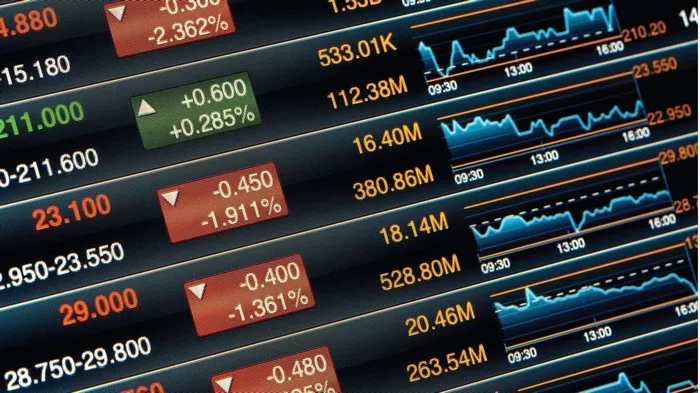Trading NASDAQ futures can be a lucrative endeavor for seasoned investors and newcomers alike. Understanding the intricacies of this market, however, is essential for success. This guide aims to provide a comprehensive overview of NASDAQ futures trading, covering everything from basic concepts to advanced strategies.
Introduction to NASDAQ Futures
NASDAQ futures allow traders to speculate on the future price movements of the NASDAQ Composite Index. This index comprises thousands of stocks listed on the NASDAQ exchange, predominantly technology and growth-oriented companies. Futures contracts on the NASDAQ offer traders the opportunity to profit from both upward and downward price movements in this index.
Why Trade NASDAQ Futures?
Trading NASDAQ futures offers several advantages over trading individual stocks. Firstly, it provides exposure to a broad range of tech stocks without needing to buy each stock individually. Secondly, futures contracts are leveraged financial instruments, allowing traders to control a large amount of capital with a relatively small initial investment. This leverage can amplify both gains and losses, making risk management crucial.
Understanding NASDAQ Futures Contracts
NASDAQ futures contracts specify an agreement to buy or sell the NASDAQ index at a predetermined price at a specified future date. Each contract has standardized terms set by the exchange, including contract size, expiration date, and tick size (minimum price movement). For example, a NASDAQ futures contract might represent $100 times the index value.
Key Players in NASDAQ Futures Trading
Several types of market participants engage in NASDAQ futures trading:
Speculators: These traders aim to profit from price movements in the NASDAQ index without intending to take physical delivery of the underlying stocks.
Hedgers: Institutional investors and corporations use NASDAQ futures to hedge against adverse price movements in their portfolios. For instance, a tech-heavy mutual fund might hedge its exposure to NASDAQ stocks by shorting NASDAQ futures.
Arbitrageurs: These traders exploit price differentials between NASDAQ futures and the underlying stocks or related financial instruments. Arbitrage helps maintain price efficiency in the market.
Factors Influencing NASDAQ Futures Prices
Several factors impact NASDAQ futures prices, including:
Economic Data: Macroeconomic indicators such as GDP growth, employment numbers, and inflation can influence investor sentiment and thus NASDAQ futures prices.
Interest Rates: Changes in interest rates set by central banks affect borrowing costs for companies and consumer spending, indirectly impacting tech stocks and NASDAQ futures.
Company Earnings: Quarterly earnings reports from tech giants like Apple, Amazon, and Microsoft can significantly move the NASDAQ index and its futures contracts.
Technical Analysis for NASDAQ Futures
Technical analysis involves studying historical price charts and trading volume to forecast future price movements. Key technical indicators for NASDAQ futures include:
Moving Averages: These indicators smooth out price data, providing a clearer picture of the underlying trend.
Relative Strength Index (RSI): RSI measures the speed and change of price movements, indicating overbought or oversold conditions.
Support and Resistance Levels: These are price levels where a downtrend or uptrend is expected to pause or reverse, based on historical price patterns.
See Also: What is the Nasdaq Futures Symbol?
Fundamental Analysis Considerations
Fundamental analysis focuses on assessing the intrinsic value of the NASDAQ index based on economic, industry, and company-specific factors. Key considerations include:
Earnings Growth: Consistent earnings growth in tech companies is a positive indicator for future NASDAQ index performance.
Industry Trends: Understanding broader industry trends, such as advancements in technology or regulatory changes, can provide insights into the future direction of the index.
Risk Management Strategies
Managing risk is crucial in NASDAQ futures trading due to the leverage involved. Effective risk management strategies include:
Setting Stop-Loss Orders: These orders automatically close out a trade at a predetermined price level, limiting potential losses.
Diversification: Spreading investments across different asset classes and sectors reduces exposure to any single risk factor, such as a downturn in tech stocks.
Position Sizing: Calculating the appropriate position size based on risk tolerance and account size helps prevent excessive losses on individual trades.
Trading Strategies for NASDAQ Futures
Several trading strategies are commonly employed by NASDAQ futures traders:
Trend Following: This strategy involves identifying and riding established trends in the NASDAQ index, based on technical indicators like moving averages and trendlines.
Breakout Trading: Traders look for price movements above or below established support or resistance levels, anticipating continuation of the trend.
Mean Reversion: This strategy involves identifying overbought or oversold conditions based on technical indicators like RSI and anticipating a reversal to the mean.
News Trading: Traders capitalize on significant news events, such as earnings announcements or economic reports, that impact NASDAQ futures prices.
Psychology of NASDAQ Futures Trading
Psychological factors play a significant role in trading NASDAQ futures. Common psychological pitfalls include:
Fear and Greed: Emotions can lead traders to make irrational decisions, such as holding onto losing positions or exiting winning trades too early.
Overconfidence: Success in a few trades can lead to overestimating one’s abilities, potentially leading to larger, riskier positions.
Discipline: Maintaining discipline in following a trading plan and sticking to predefined risk management rules is essential for long-term success.
Conclusion
Trading NASDAQ futures offers opportunities for both profit and risk. By understanding the fundamentals of NASDAQ futures contracts, employing effective trading strategies, and managing risk diligently, traders can navigate this dynamic market successfully. Continuous learning, adaptation to market conditions, and disciplined execution are key to achieving sustainable profitability in NASDAQ futures trading.


